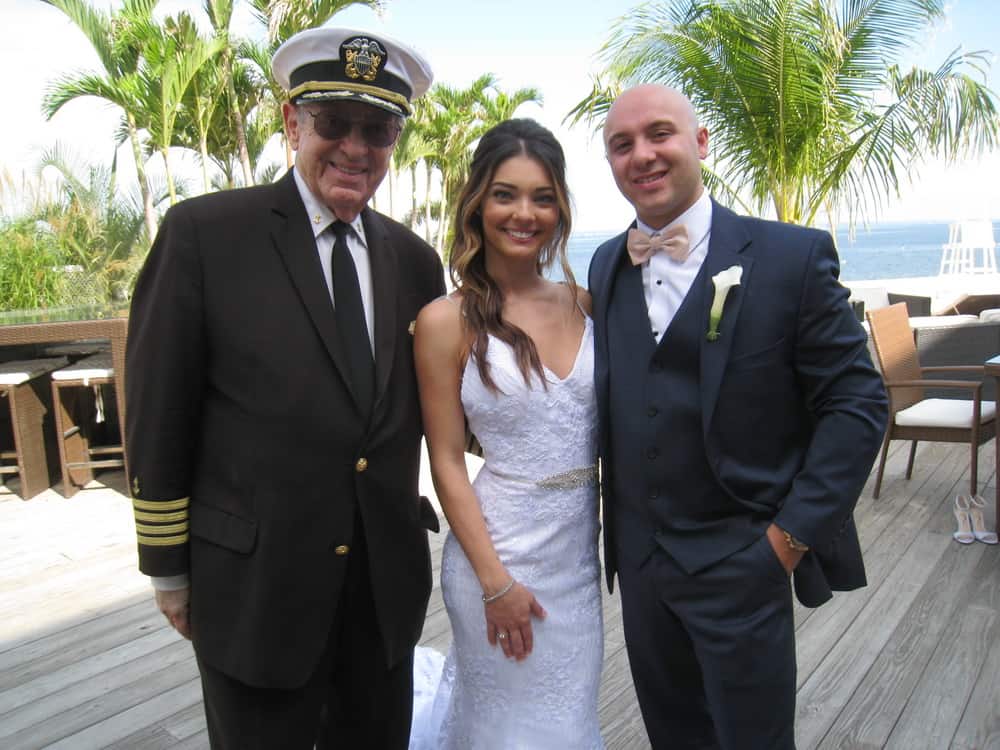There is nothing more sacred than your wedding and the ceremony associated with it. Being a registered wedding officiant in NYC, I have officiated countless weddings and I can tell you that couples want their wedding ceremonies to be intimate, heartfelt, and memorable.
The couples who want a more conventional celebration, ask me to follow the traditional wedding ceremony order. Typically, a traditional wedding ceremony order includes an introduction or welcome by the minister, followed by the exchange of vows. Then the rings are exchanged, and the couple shares a kiss. Finally, the registered wedding officiant NYC announces them as a married couple for the first time.
No doubt, your wedding remains the most important part of the memories you want to long last. But on the other hand, small rituals and orders may seem inconsequential and redundant to most couples nowadays. But trust me, these small rituals hold enormous value and significance especially when you choose a traditional wedding ceremony for yourself.
Let me explain to you about the traditional wedding ceremony order here.
1 – The Processional
A wedding ceremony starts with the processional. The immediate families and wedding party head down the aisle and take their places on either side of the altar. Then comes the turn of the bride’s mother followed by the groom, best man, paired-up wedding party, flower girl, and ring bearer. The processional concludes with the entrance of the bride escorted by her father who “gives her away” to the groom.
2 – Words of Welcome
After everyone takes their seat, the registered wedding officiant NYC speaks words of welcome where he extends thanks to the guests for taking pains to attend the ceremony and wishing good luck to the soon-to-be-married couple.
3 – Introduction
The officiant of the wedding offers an introduction and shares his thoughts on the couple and marriage – a union of two souls. An introduction may include a brief about the story you share with your partner and what marriage means to you together. He may also read what to come in the ceremony and what they signify in the course of the ceremony.
4 – Readings
Here guests are invited to share their thoughts for the couple through readings. Your officiant can introduce the readers and fill in whenever it is necessary to keep the proceeding interesting for the guests. Sometimes, readings are not part of the ceremony and are included only when a couple wants them on the D-day.
5 – Exchange vows
Now, it is time to exchange the sacred vows with each other. The couple at this stage recites their vows, the most emotional part of the ceremony especially when you have written your own vows. I usually encourage the couple to write their vows and step in only when I feel some mandatory alterations are required.
6 – Ring exchange
Ring is the symbol of marriage and sacred union. After exchanging vows, the bride and groom place rings on each other fingers.
7 – The kiss
The couple seals their marriage with a kiss at this stage. Your first kiss after exchanging the vows and rings is the most exhilarating experience you want to imprint forever in the memories of your partner and yours.
8 – Unity ceremony
If there is the best time to incorporate a unity ceremony, then it is at this stage. In a unity ritual, a couple usually does something physically that symbolizes their new union. The couple can light a single candle with two candles or bind their hands together with a ribbon.
9 – Closing remarks
The rituals usually end with the ceremonial final prayer also called closing prayer. Typically, the officiant calls for the congregation to lift their hands and join in blessing the newlywed couple. He may exchange words of encouragement with the couple and bless them in their union. Others also wish the couple a strong bond, faithfulness, and prosperity.
10 – The Recessional
Now the couple is officially married, and it is time for the wedding officiant to pronounce them married and introduce them to the guest as a married couple. This is the time to applaud and celebrate the moments with newlyweds. The newlyweds then lead the recessional down the aisle, the order reverse of the processional.

